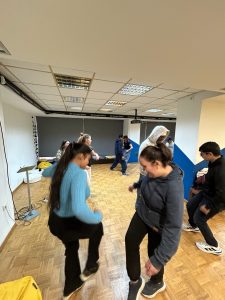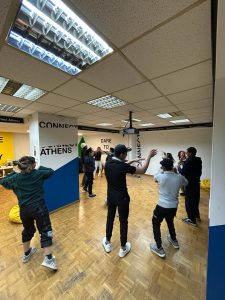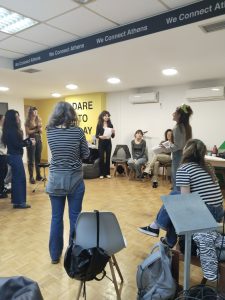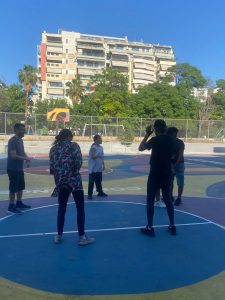Healthy Inclusion Through Art: The Power of Music in Mental Health
Music is one of the most powerful and universal forms of human expression. It is deeply connected to emotional life and has the capacity to influence psychological states in ways that are both immediate and profound. For young people, who often face heightened levels of stress, anxiety, and uncertainty, music offers a constructive outlet for processing emotions and restoring inner balance. Far beyond entertainment, it functions as a medium for coping, self-regulation, and resilience. Whether through listening, performing, or moving to rhythm, music connects body and mind, creating pathways toward greater psychological stability.
Music and Mental Health in Youth
Adolescence and early adulthood are particularly sensitive periods in mental health development. The pressures of identity formation, academic demands, and social expectations frequently contribute to elevated stress and vulnerability to anxiety or depressive symptoms. Music provides young people with an accessible means of managing these challenges. Engaging with melody and rhythm can soothe heightened arousal, reduce intrusive thoughts, and help regulate mood. Importantly, it creates a safe, non-verbal space in which emotions can be expressed and understood without fear of judgment.
Singing as Emotional Release and Connection
Singing represents a uniquely powerful extension of musical experience. The act of vocal expression integrates breathing, posture, and resonance, which together induce relaxation and enhance bodily awareness. At the psychological level, singing contributes to improved effect, reducing tension and promoting feelings of vitality. Collective singing further amplifies these benefits: when voices blend, participants experience synchrony and connection that foster empathy and belonging. For many young people, choral or group singing counters loneliness, supports identity development, and strengthens the sense of being part of a community.
Group vocal expression fostering emotional release, self-confidence, and a sense of community.
Dance as Embodied Music
Dance brings music into physical form, transforming sound into movement and emotion into action. This embodied experience engages both physiological and psychological processes: rhythm and motion stimulate endorphin release, elevate mood, and enhance body awareness. For young people, dance provides an outlet for emotional expression that words cannot always capture. It also contributes to healthier body image and self-acceptance, elements crucial for psychological well-being in adolescence. In group contexts, dance fosters trust, cooperation, and mutual recognition, strengthening social bonds through shared rhythm and coordinated action.


Dance as embodied music, enhancing body awareness, positive self-image, and collective well-being.
Music, in all its forms, is inseparable from human well-being. For young people, it represents a vital resource for managing stress, regulating emotions, and developing resilience. Singing and dance, as natural extensions of musical expression, demonstrate how voice and movement integrate mind and body in processes of healing and growth. At both the individual and collective level, music cultivates empathy, strengthens community ties, and supports inclusion. Far more than an artistic pursuit, it stands as a fundamental pathway to healthier, more connected lives.
Author:
Panagiota Katsiri
Integrative Counsellor/ Sociologist
References
- Clift, S., & Hancox, G. (2010). The significance of choral singing for sustaining psychological well-being. Music Performance Research, 3(1), 79–96.
- Fancourt, D., & Perkins, R. (2018). Effect of singing interventions on symptoms of postnatal depression: Three-arm randomized controlled trial. The British Journal of Psychiatry, 212(2), 119–121.
- Hallam, S. (2010). The power of music: Its impact on the intellectual, social and personal development of children and young people. International Journal of Music Education, 28(3), 269–289.
- Koch, S. C., Riege, R. F. F., Tisborn, K., Biondo, J., Martin, L., & Beelmann, A. (2019). Effects of dance movement therapy and dance on health-related psychological outcomes: A meta-analysis. The Arts in Psychotherapy, 63, 118–127.
- MacDonald, R., Kreutz, G., & Mitchell, L. (Eds.). (2013). Music, Health, and Wellbeing. Oxford University Press.


